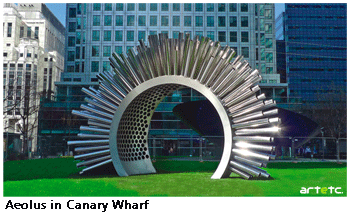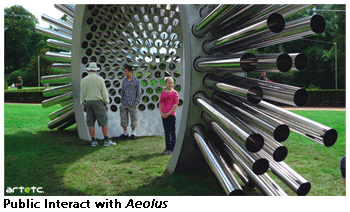- Publisher's Note
- Editorial
- Looking from the Other Side
- Women in Rabindranath Tagore's Paintings
- Ramkinkar Baij's Santhal Family
- The Birth of Freedom in Moments of Confinement
- Jamini Roy's Art in Retrospect
- The Great Journey of Shapes: Collages of Nandalal Bose
- Haripura Posters by Nandalal Bose: The Context and the Content
- The Post-1960s Scenario in the Art of Bengal
- Art Practice in and Around Kolkata
- Social Concern and Protest
- The Dangers of Deifications
- Gobardhan Ash: The Committed Artist of 1940-s
- Gopal Ghose
- Painting of Dharmanarayan Dasgupta: Social Critique through Fantasy and Satire
- Asit Mondal: Eloquence of Lines
- The Experiential and Aesthetic Works of Samindranath Majumdar
- Luke Jerram: Investigating the Acoustics of Architecture
- Miho Museum: A Structure Embedded in the Landscape
- Antique Victorian Silver
- Up to 78 Million American Dollars1 !
- Random Strokes
- Are We Looking At the Rise of Bengal
- Art Basel and the Questions it Threw Up
- What Happened and What's Forthcoming
- Art Events Kolkata, May – June 2012
- Mumbai Art Sighting
- Delhi Dias
- Art Bengaluru
- Preview June, 2012 – July, 2012
- In the News, June 2012
ART news & views
Luke Jerram: Investigating the Acoustics of Architecture
Issue No: 30 Month: 7 Year: 2012
by Preeti Kathuria
A metal structure standing vibrant amidst the corporate, high-rise architecture of London's Canary Wharf made me cut short my trip and get off the bus at Canada Square Park. About 300 polished stainless steel tubes arranged in a six meters high, semi-circular arch is Luke Jerram's acoustic-optical wind pavilion. It is called - Aeolus, referencing the Greek God of four winds. A very contemporary tubular musical instrument, it has nylon harp strings attached to some of the tubes, which redirect the passing air into the center of the arch and creates melodious sound.
 Designed to resonate with the wind, this giant size harp envelopes the visitor and provides charming views of steels' interaction with light. From day-to-night it amplifies the changing light and spreads its glistening brightness. It sits like a princely crown or a magical gateway, gracefully disseminating an aura of light and energy, as if taking us towards the ambient light of the eternal. The experience of standing under the benevolent, glowing arch is like forming a halo around oneself and reinstating one's presence. This lofty edifice with its simple configuration plays itself out in the public arena and audience interaction adds more drama to it. Visitors tend to lean over and peep into the hollow steel tubes to see a landscape divided into several circular frames echoing the reflective, glossy vibrancy of the environment. It becomes a laboratory of fragmented conjectures seeking to determine the magic in our natural surroundings.
Designed to resonate with the wind, this giant size harp envelopes the visitor and provides charming views of steels' interaction with light. From day-to-night it amplifies the changing light and spreads its glistening brightness. It sits like a princely crown or a magical gateway, gracefully disseminating an aura of light and energy, as if taking us towards the ambient light of the eternal. The experience of standing under the benevolent, glowing arch is like forming a halo around oneself and reinstating one's presence. This lofty edifice with its simple configuration plays itself out in the public arena and audience interaction adds more drama to it. Visitors tend to lean over and peep into the hollow steel tubes to see a landscape divided into several circular frames echoing the reflective, glossy vibrancy of the environment. It becomes a laboratory of fragmented conjectures seeking to determine the magic in our natural surroundings.
 There is an underlying connection between the Aeolus and the corporate sky scrapers of Canary Wharf: one, they are made of reflective surfaces - metal and glass; second, they signify strength and elegance; third, they are a wonderful example of technical finesse and engineering. Sitting amidst the lively, corporate hum-drum of London the Aeolus has a mutually reflective relationship with the architecture. One cannot deny that this part of London works as a perfect setting for Jerram's magnificent sound sculpture.
There is an underlying connection between the Aeolus and the corporate sky scrapers of Canary Wharf: one, they are made of reflective surfaces - metal and glass; second, they signify strength and elegance; third, they are a wonderful example of technical finesse and engineering. Sitting amidst the lively, corporate hum-drum of London the Aeolus has a mutually reflective relationship with the architecture. One cannot deny that this part of London works as a perfect setting for Jerram's magnificent sound sculpture.
Currently residing in Bristol, UK, Jerram is colour-blind and he tirelessly uses this inadequacy to create sincere pieces of art. Working across a variety of mediums, Jerram likes to explore and imbibe technology into art, deceiving stereotypes and our preconceived expectations from artists. The Aeolus is inspired by Jerram's trip to Iran in 2007, where he explored the mosques of Isfahan and interviewed a dessert well-digger. The digger talked about his experience of wells singing in the wind. Jerram found this very intriguing and decided to investigate the acoustics of architecture. His re-articulation of singing wells into an acoustic sculpture can be seen as a discourse on understanding the criticality of space, sound and movement.
This singing sculpture is therefore multidisciplinary in its character, a splendid fusion of architecture, music and the environment. Emma Ridgway, Senior curator, Royal Society of Arts, London sums it up beautifully, 'Building on Jerram's exploration of human perception, Aeolus promises to do what art does best, which is to re-sensitise us to life by amplifying elements of everyday experience. Aeolus brings together contemporary engineering and art to address our relationship to the natural environment, making it a timely and worthwhile new work.'